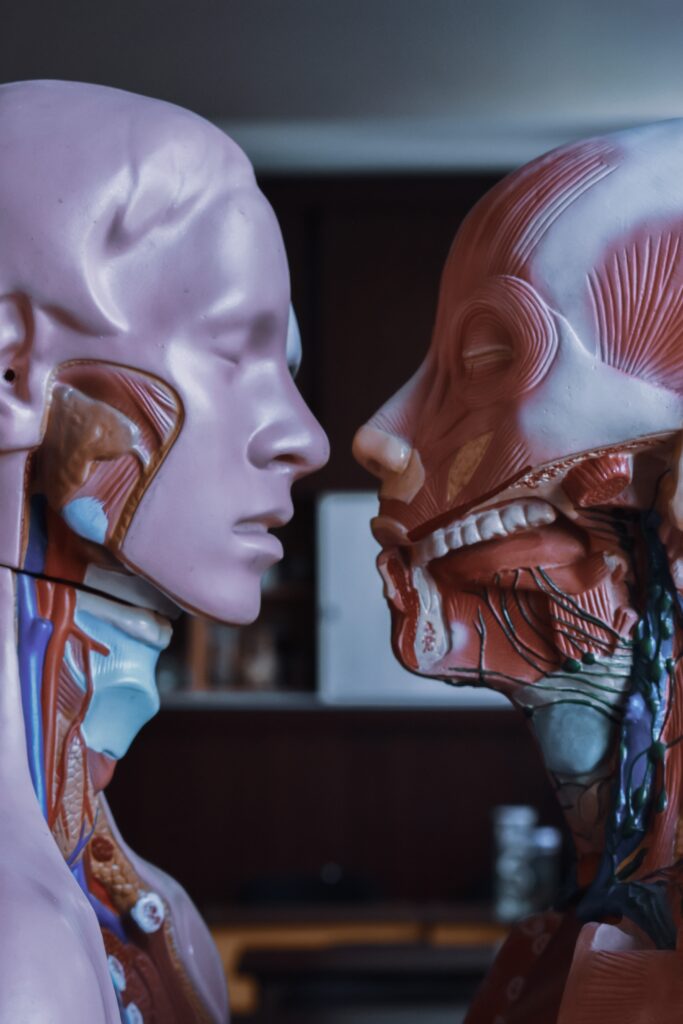
The understanding of the myofascial network has increased in the past decade and is showing such an important bridge for understanding how acupuncture works. Fascia is a type of connective tissue that wraps around all muscles, bones, and organs to provide support and stability to the body. These fascial networks form a web of connective tissue that provides structural stability, flexibility, communication, and coordination between all parts of the body. This article explains the importance of the fascia and how to utilize this knowledge within your acupuncture practice.
The fascia is an incredibly important system in the body that plays an integral role in supporting and protecting the muscles, bones, and organs. Fascia not only helps to maintain posture but also provides support and stability to the body and helps to provide shock absorption and cushioning. We are finding out is also an important aspect of internal communication.
Fascia also helps to regulate the flow of fluids and nutrients to the body’s cells and tissues, while maintaining a crucial role in the structural integrity and functionality of the body, and in aiding in the recovery process of damaged tissues. From a Chinese medical perspective, this system helps to keep the body’s energy channels open, allowing for the free flow of energy throughout the body. Fascia is an essential part of a healthy, functioning body and its importance should not be overlooked.
What is Fascia?
A comprehensive description of the term “fascia” is still being determined within the scientific community, but there is a solid understanding and agreement that the fascia is a layer of collagen-containing connective tissue, that covers all organs, muscles, bloodstreams, and joints. The fascial network is also able to receive mechanical stimuli and can influence the function and form of the entire body.
The text written by Bruno Bordoni, states that even though there is not a cohesive definition, agreement is found that “the fascia covers every structure of the body, creating a structural continuity that gives form and function to every tissue and organ.” The text continues to state that these specialized tissues “have a ubiquitous distribution in the body system; it is able to wrap, interpenetrate, support, and form the bloodstream, bone tissue, meningeal tissue, organs, and skeletal muscles.”
The website Anatomy Trains is a great resource to learn more as well.
Understanding the fascial networks can help you have a more in-depth understanding of the interconnectedness of the body while teaching people how to maintain health and reduce the risk of injury, especially as a practitioner.
Function and Form
Not unlike the theory of yin-yang, fascia upholds both sides of the dynamic of form and function and helps both stability and movement.
Function
A study published in the Journal of Integrative Medicine, states that the most integral functions of the facial network lay within the;
- Motor Function
- Nervous System regulation
- Vascular support
- Visceral support
- Homeostasis- Overall maintaining the efficiency of the body systems.
Form
The formation of the myofascial tissue is being studied as we speak, and what was once seen as indistinct layers is now considered vascular tissue with a more like sheath, web, or sheet, and varies slightly depending upon where it is found within the body.
Anatomy
Fascia shows up differently throughout the body, and according to a study published in The Journal of Canadian Chiropractic Association, a lot of the structure of fascia is dependent upon location, density, fiber direction, and fascia’s relationship to surrounding structures.
Integration
The more we learn about how the body works and its underlying structure, potentially the more change and benefit we can initiate.
Many practitioners work within the framework of “myofascial release” to bring more movement and less tension in specific areas of the body. It is seen that the fascia is released within its superficial layer within 30-60 seconds as the deeper fascial layers can take up to 3 minutes to be released. There are many amazing teachers out there that focus on this information. My suggestion if you are interested in learning more is to find a well-versed instructor and get your hands on as many people as you can to do some bodywork. One major part of this practice is cultivating “listening hands”- gaining sensitivity and deep listening to how the patient’s body changes when it experiences time, heat, and pressure.
Listening Hands
When working with the body, it is crucial to take the part of the observer, the listener. Using your hands to “listen” to the story your patient’s tissues are telling. This often needs soft hands and a flexible yet connected touch.
Pressure/ Palpation
Palpation and the application of pressure to the muscles, joints, and hence the facial network causes change within the connective tissues. The amount of pressure that needs to be applied is again determined by the patient’s body, applying more pressure over time to create change. You are looking for a place of resistance and trying to maintain engagement until you notice a subtle shift.
There are many techniques to learn under this topic, and the best way is to practice hands-on.
What Else?
Fascial communication, the communication network of the fascia system, is a concept that has gained much attention in the field of anatomy and physiology and is laying the foundation not only for decreasing pain and guiding bodywork sessions but also for effective orthopedic surgical procedures.
Some research has revealed that the fascial system is not only confined to the local tissue but also has the ability to communicate across different body regions, contributing to the regulation of various physiological processes. Fascial communication occurs through the transmission of mechanical signals and electrical impulses, which are conveyed through the extracellular matrix of the fascial network.
Mechanical signals can be generated by changes in posture or movement and can propagate through the fascia to affect distant regions of the body. For example, the tension in the fascia of the lower back can transmit to the fascia of the neck and shoulders, resulting in pain and stiffness in these areas. (Think Bladder Meridian!)
Electrical impulses can also travel through the fascia, and recent studies have shown that the fascial system has a highly conductive nature, allowing for the rapid transmission of electrical signals. The fascia contains a high concentration of specialized cells called fibroblasts, which are responsible for maintaining the structural and functional properties of the connective tissues. These fibroblasts are also capable of producing and transmitting electrical signals, which can directly influence the activity of nearby cells and tissues.
Furthermore, the fascia is rich in sensory receptors such as mechanoreceptors and nociceptors that can detect changes in mechanical and chemical stimuli. These receptors are involved in the transduction of sensory information, which is then transferred to the central nervous system for processing.
Fascial communication has important implications for our understanding of human physiology and the management of various musculoskeletal disorders. By recognizing the interconnectedness of the fascial system, healthcare professionals can develop more effective treatment strategies that consider the entire body and not just the affected tissues.
References
- Bordoni B, Mahabadi N, Varacallo M. Anatomy, Fascia. In: StatPearls. StatPearls Publishing, Treasure Island (FL); 2022. PMID: 29630284.
- Bordoni B, Marelli F, Morabito B, Sacconi B. The indeterminable resilience of the fascial system. J Integr Med. 2017;15(5):337-343. doi:10.1016/S2095-4964(17)60351-0
- Kumka M, Bonar J. Fascia: a morphological description and classification system based on a literature review. J Can Chiropr Assoc. 2012;56(3):179-191.
- https://www.massagetoday.com/articles/13204/The-Amazing-Fascial-Web-Part-I
- https://www.massagetoday.com/articles/13220/The-Amazing-Fascial-Web-Part-II
- https://www.massagetoday.com/articles/15020/The-Bodys-Load-Sharing-Hub-The-Thoracolumbar-Fascia
- Willard FH, Vleeming A, Schuenke MD, Danneels L, Schleip R. The thoracolumbar fascia: Anatomy, function and clinical considerations. Journal of Anatomy. 2012;221(6):507-536. doi:10.1111/j.1469-7580.2012.01511.x
